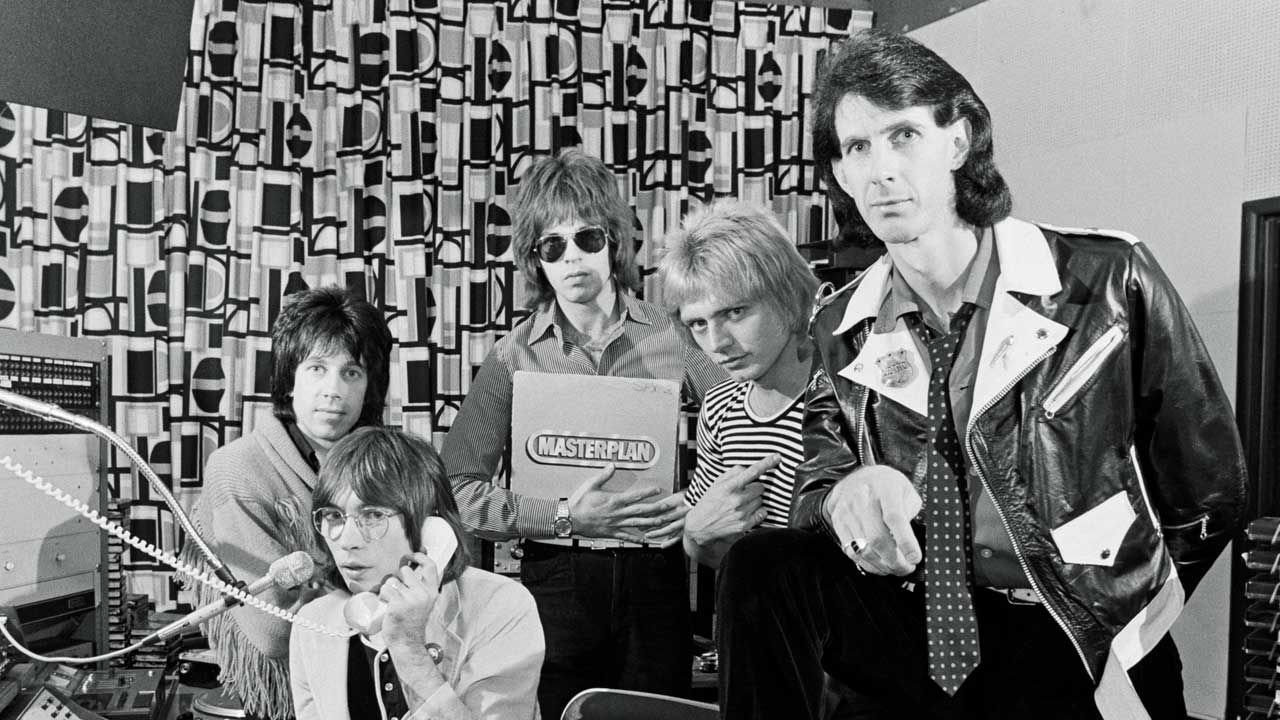There's a history of bands who clicked after they changed their names. The High Numbers became The Who. Smile became Queen. Wicked Lester became Kiss.
And Cap'n Swing became The Cars.
In 1976, Ric Ocasek and his friends Ben Orr, Greg Hawkes and Elliot Easton were playing the clubs in Boston, finding their feet. “It was a potpourri of styles, almost like a jam band,” Ocasek told me in 2007. “But I don't think the songs were up to par. Then when David [Robinson, drummer] got in the band and we started calling it The Cars, it all just gelled together. It redefined our style.”
Robinson, who Ocasek described as “Mr. Suave,” also brought a change to the group's fashion sense. “David said, 'If we want to look like a band, let's try to dress like a band.'” They adopted a simple black-and-white palette, with pegged trousers, blazers and skinny ties. And the music soon reflected that sleek, streamlined vibe.
That's where My Best Friend's Girl came in.
Ocasek told me, “It was one of the first songs I wrote for the band. I remember I was playing acoustic guitar a lot, and I would always keep the eighth notes going on the acoustic, to keep time and feel the rhythm, making it sound like more of a rock thing. When I got an electric, I just kept that eighth note thing going. It set that precedent for that feel in The Cars sound.”
Words and music arrived together. Though the lyric “wasn't something that happened to me personally,” Ocasek said that he imagined it was a universal theme. “I just figured having a girlfriend stolen was probably something that happened to a lot of people.”
The song also forged a kind of lyrical blueprint for how Ocasek would approach many of the band's hits, which was to set barbed, elliptical verses against simple choruses. Think of lines like 'You've got your nuclear boots and your drip-dry glove / Ooh, when you bite your lip it's some reaction to love', leading into the repetitive refrain.
“People tend to forget about the verse once they hear the chorus," Ocasek said. “I like to play with the words and images in the verses, so they're more open-ended, then pair them with a more straight-ahead chorus.”
Ocasek liked how the chorus added a twist to the story too. “Up until that point, you think the singer stole his best friend’s girl based on how good he feels about her. With the last line of the chorus – 'But she used to be mine' – you realise the guy didn’t steal his best friend’s girl – his friend stole her away from him."
In the studio, producer Roy Thomas Baker took Ocasek's simple demo and added widescreen grandeur, pitching the band's lean instrumentation against flashes of stacked vocals. Baker had already perfected the massive harmony sound with Queen, especially on 1975's Bohemian Rhapsody.
Ocasek said, “When we recorded vocal harmony on the line 'Here she comes again,' Roy had us record one set of vocals. He triplicated them so there were 24 voices. Then he used the Stephens machine [a multi-track tape deck] to get them up to around 70 voices. At one point, we said, 'Roy, we can’t do that,' fearing the vocals would sound too synth-y. Roy said, 'You’ll get used to it.'”
Another key texture in the song was Elliot Easton's rockabilly lead licks, partly inspired by The Beatles' I Will, and as Easton put it, “a bit counter to Ric's strong 8th-note feel.” David Robinson said, “Elliot's guitar really elevated the joy level.”
As the band listened back to what they'd created, Thomas Baker still wasn't quite satisfied.
Ocasek said, “When we finished recording the song, it was a tick too slow. Roy wanted it a little faster. So he went back and sped up the tape, pushing the song up a key, from E to F.”
Ocasek gave an acetate of My Best Friend's Girl to two Boston radio stations, where it quickly became a locally-requested favourite. Officially released worldwide in October 1978, the song reached #35 US and #3 UK (where despite negative reviews like NME's, who called it “A Sweet throwaway,” it was the band's highest-charting single). In the UK, it was also one of the first picture-disc singles, with a cartoon of a sporty red car.
When I asked Ocasek (who died in 2019 from heart failure) if he knew the song would be a hit, he said, “No. I don’t think I could ever craft a song into being a single. I guess you can tell which ones are a little more catchy. In The Cars, I could bounce off the guys, and they would say, 'That’s a single.' But when I’m writing songs, I don’t think that way. I just think that they’re all chapters in the book for that one record.”

